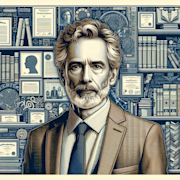The Intersection of Science and Art: Mary Shelley's Frankenstein

Mary Shelley’s Frankenstein is a timeless classic that explores the intersection of science and art. Published in 1818, this novel delves into the consequences of scientific exploration and the ethical implications of playing god. As one of the earliest examples of science fiction, Frankenstein continues to captivate readers with its thought-provoking themes and complex characters.
The Influence of Science on Shelley’s Work
Mary Shelley was deeply influenced by the scientific advancements of her time. The 19th century was a period of great innovation, with breakthroughs in anatomy, electricity, and chemistry reshaping the way people viewed the world. Shelley drew on these advancements to craft a story that challenged societal norms and questioned the limits of scientific progress.
The character of Victor Frankenstein embodies the archetype of the mad scientist, driven by a relentless pursuit of knowledge at any cost. His creation of the monster is a cautionary tale about the dangers of unchecked ambition and the ethical implications of scientific experimentation. Shelley uses Frankenstein’s story to explore the dark side of human nature and the consequences of playing with forces beyond our control.
The Artistic Vision of Frankenstein
While Frankenstein is deeply rooted in scientific theory, it is also a work of artistry and creativity. Shelley’s prose is rich with symbolism and metaphor, inviting readers to contemplate the larger themes at play in the novel. The gothic atmosphere of the story, with its dark and brooding settings, adds to the sense of foreboding and unease that permeates the narrative.
Shelley’s blending of science and art in Frankenstein is a testament to her skill as a writer. She deftly navigates complex themes and philosophical questions, weaving them into a cohesive and compelling narrative. Through her creation of Victor Frankenstein and his monster, Shelley challenges readers to consider the ethical implications of scientific advancement and the responsibilities that come with wielding knowledge and power.
The Legacy of Frankenstein
More than two centuries after its publication, Frankenstein continues to resonate with readers and scholars alike. The novel’s themes of ambition, hubris, and the pursuit of knowledge are as relevant today as they were in Shelley’s time. The character of the monster, often misunderstood and marginalized, remains a powerful symbol of the consequences of unchecked scientific progress.
Frankenstein has inspired countless adaptations and reinterpretations in literature, film, and popular culture. The story’s enduring legacy is a testament to its timeless appeal and enduring relevance. As science and technology continue to advance at a rapid pace, Shelley’s cautionary tale serves as a reminder of the ethical dilemmas that come with wielding power over the natural world.
Conclusion
Mary Shelley’s Frankenstein is a masterpiece of literature that explores the complex relationship between science and art. Through the character of Victor Frankenstein and his creation, Shelley delves into the ethical implications of scientific experimentation and the consequences of playing god. Her blending of scientific theory and artistic vision creates a compelling narrative that continues to captivate readers to this day.
As we grapple with the ethical dilemmas posed by advancements in science and technology, Frankenstein serves as a reminder of the dangers of unchecked ambition and the importance of considering the consequences of our actions. Shelley’s exploration of these themes has solidified Frankenstein as a timeless classic that will continue to spark conversation and reflection for generations to come.

Johnathan Evans
Journalist
More From Classics Authority Books

Book
Rediscovering Classic Asian Literature: From Murasaki Shikibu to Lu Xun

Book
Gaskell's Cranford Chronicles: A Glimpse into Victorian Village Life

Book
Salinger's Caulfield: The Catcher in the Rye's Enduring Relevance

Book
The Mystic Realism of Hermann Hesse: Siddhartha's Spiritual Journey

Book
Native Son by Richard Wright

Book
Things Fall Apart by Chinua Achebe





